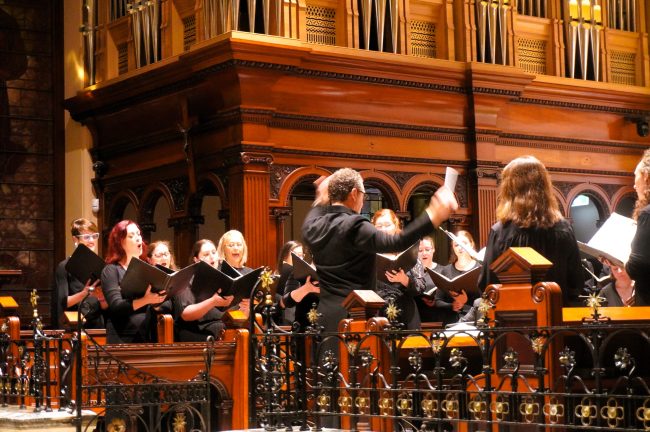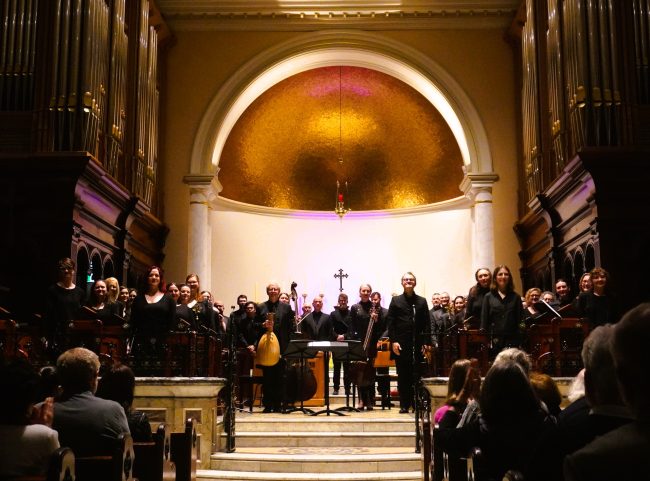
Friday 16 August, 2024
Sydney Philharmonia Choirs Chamber Singers
Review by Paul Neeson (Arts Wednesday)
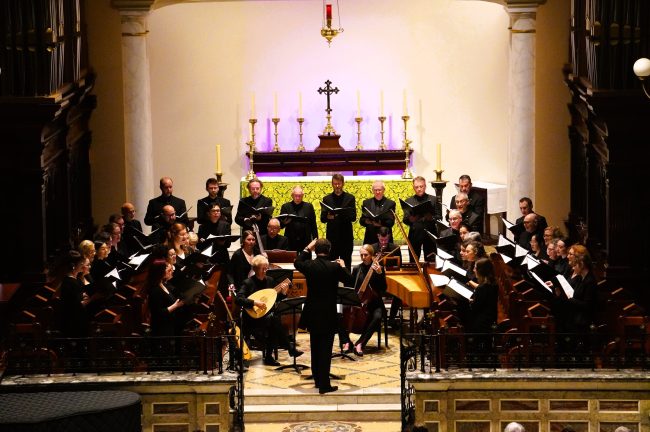
The queue to get into the St James’ Church was moving slowly as the distant thunder was rumbling. Fortunately we were all seated by the time the Sydney Philharmonia Choirs Chamber Singers filed in to the choir stalls for a program of Italian Baroque, and within the first few bars of the opening work, Gabrieli’s Hodie completi sunt dies Pentecostes, the skies opened with a loud crash of thunder, heightening the drama of the evening’s concert.
The divine joy inherent in Gabrieli’s work had me wondering whether this was a madrigal, but it was clearly a sacred work. It was composed for performance at St. Mark’s Basilica in Venice with the choir echoing each other from the stalls at opposite sides of the basilica. The humble architecture of St James’ Church (in comparison to St. Mark’s) could not deliver the lofty acoustic imagined by the composer, but the Chamber Singers directed by Brett Weymark captured our imagination from the first bar.
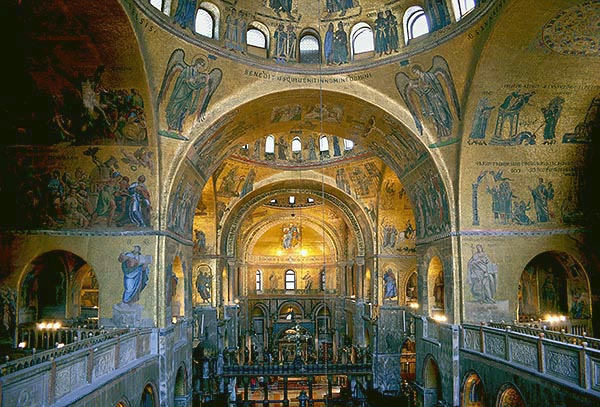
Staying in Venice, Monteverdi’s Mass for 4 voices was one of his final compositions. Whilst it is a conventional mass, Monteverdi utilised his sense of drama that he had developed in his creation of the new theatrical genre of opera 40 years earlier. His use of wide dynamics, unexpected key signatures and tempi were certainly forward looking and unusual in the church setting. By the time we reached the Sanctus, the overhead storm had passed which seems fitting, like the gods couldn’t resist being part of the performance. Monteverdi’s rich imagination was embellished by his use of basso continuo Viola da Gamba (Anthea Cottee), Violone (Pippa MacMillan), Lute (Stephen Lalor) Harpsichord (Nathan Cox) and Organ (David Drury).
Another composer who was enticed by the drama in music was Giacomo Carissimi, who specialised in the oratorio form, a more sacred substitute for opera which was considered inappropriate for the holy month of Lent. His setting of Dixit Dominus manages to combine the sacred with the dramatic – it brought to a close the first half of the concert in grandiose style.
If the first half displayed technical drama, after interval we were immersed in the dramatic subject of the Crucifixion, opening with Lotti’s Crucifixus for 8 voices, a very emotional work full of sublime harmonies. The choir subdued the audience to a hushed reverence with their perfect phrasing and impeccable harmonies that lingered in the air, waxing then waning, fading eventually to a sublime perfect silence.
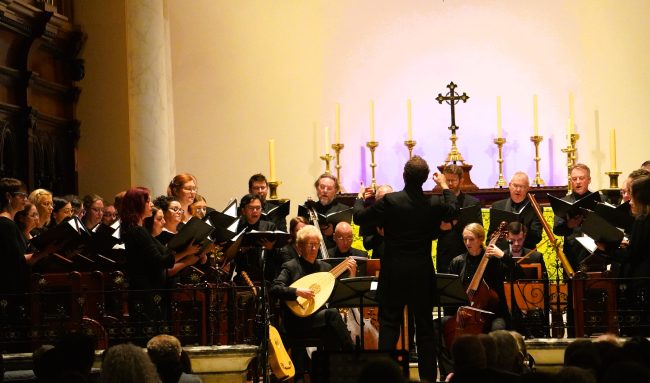
Being more familiar with Domenico Scarlatti’s keyboard music it was a delight to hear his setting of Stabat Mater, the centrepiece of the 2nd half. The complex polyphony managed to shine and shimmer in the dark church, and the raw emotion of Mary at the foot of the Cross was palpable in this moving performance. It lacks the biting dissonance of Pergolesi’s setting and while the emotion is more contained, Brett Weymark was able to extract every shift in emotion to perfection.
And staying on the crucifixion theme, we ended on Antonio Lotto’s Crucifixus a 8 voci. What a delightful way to finish, a brief luminous vocal miniature that made our metaphorical ascension in to the heavens a sheer rapture.
And so we filed out into the night, glowing in a sacred euphoria, the now silent lightning flashing sporadically off to the east, lighting our journeys home. Nature had truly accompanied our night of choral pleasure with the drama and then the peace it deserved.
